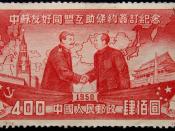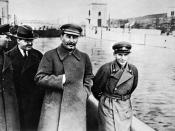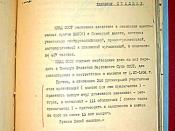In 1989 a series of peaceful revolutions brought an end of the Soviet Union domination in communist states in Central and Eastern Europe. Dissidences, demonstration, protests, and the collapse of the communist regime led to the institution of democratic governments after four decades communist rule. These revolutions reveled both ubiquitous decay of the Soviet based communist system as a whole, but also how civil society developed a voice of dissidence and resistance within each nation in response to the repressive structures of communist regime. The active and involved role of civil society during the collapse of the communism seemed to have made these events unique in comparison to other revolutions. More than a decade has passed since these events, during which the idea of civil society in CEE context has evolved considerably. Both politicians and theorist have attempted to assess the strength of 'civil society' in these states and have used the notion as an interpretative tool in attempt to measure the democratic health of former communist states (Briton 2005: p.
1 ).
However, not all states of the Soviet bloc had strong civil society and not everywhere democratization did go such peacefully as in Poland, Czechoslovakia and Hungary where situation was much more simple. On the other hand in countries such as Romania, Bulgaria or former Yugoslavia the transition to democracy claimed thousands of deaths.
Nevertheless, this paper will focus on the role of the 'civil society' and it is emergence in 1980s as cause for the collapse of communist regime, by showing the contrast between Poland and Romania.
Thus, firstly, it is required to start from a brief description how Soviet Union social bloc was create and also mention about main features of the communism in the Soviet bloc states and characterize a communist regime in Central and Eastern Europe (CEE) after World War Two.
Thus, it seems natural that Central and Eastern European countries hoped that Soviet Union with huge Stalin's Red Army after beating the Nazi's will make the region free from foreign domination. Unfortunately, for CEE, during Red Army march to Berlin between 1944-5, Stalin determined to do not make a CEE a hostile territory ever again. That is why he decided to cerate a buffer zone between Soviet Union and the West by imposing Soviet style socialism on all of Central and Eastern Europe.
Hence, first couple of years after the war are regarded as relatively tolerant for non-Communist parties in CEE. However, in 1948 when the West Germany was established by the Western World, Stalin end with his tolerance for non-Communist parties. He immediately, ordered to all Communist parties eliminate all political opponents and take over the power over the state, and in by the end of 1940s all CEE states were govern like a Soviet Union. It meant that each country was ruled by Politburo of the national Communist Party. Officially, each country had a single house of parliament, whose member were selected by Communist Party officials and than elected by people who were all about required to show up on the election day to vote for the sole candidate on the ballot (Kesselamn et. al 2006: p. 500). Nevertheless, it seems that this period brought the economic stability for CEE states. Moreover, young people especially with working-class background supported communism and started to believe in communist ideology. On the other hand, those years regarded as Stalinism (1945-1955) were at same time the most brutal and violent period. Political repressions and hardship of the regime started to provoke the first voice of the opposition mainly intellectuals and students (white).
First steps into direction democracyYet, in the time of 1950s, seemed that industrialization was much more important that than democracy (Kesselman et. al 2006: 507). However, in the next 39 years everything was about to change and CEE would be nothing else than democracy. Nevertheless, before that happened, by 1960s no East-European country, expected their nations to disappear. The economic situation may have been worse off than those in the West but the debilitating poverty and enormous inequalities of the past had been eliminated. Even though, communism maintain a political repression. If we talk about the political repression it is worth considering who was a target of those attacks and was an enemy and threat Communist parties. In the opinion of the Communist, former aristocracy, land owners, intellectuals were constitute as the biggest threat to Communism and how the future showed Communists were partly right.
Moreover, universal censorship, general critique of Western world, widespread propaganda about evil capitalism, no civil rights at all. Blind and absolutely loyal tribute to working classes as well as faith in Marxism and Leninism values especially after Stalin's dead in 1953 (Lis 1999: 20). Those are the most common examples of Communist Party activities against democracy and simultaneously the most gentle ones. Undoubtedly, the most violent apparatus of Communist Party was political police that beat, humiliated and ordered to be a spy for the Party by threatening to kill whole family if you would refuse their offer. In every country political police had its own name for example in East Germany was STASI in Soviet Union was KGB and in Poland firstly, was ORMO and transformed into ZOMO and also Securitate in Romania (Najsztub 2004: p. 15). Furthermore importantly, it is worth to mention about labour camps called GULAG, mostly located in the Siberia where all so called 'enemies of the Communism and the Party were sent and obviously never came back. There were also a political prisons, where mainly oppositionists of the regime could spent a couple of years without any reason and directly interpreted accusation.
Hence, political repression raised many types o resistance. Many of them involved a social activities against political police and giving secret lectures about democracy and proving that Communism is wrong especially in the Soviet version. Finally, in 1956 history witnessed first uprisings in the Central and Eastern Europe, more specifically in Poland and Hungary. The intellectual critique gave way to protest from below as workers challenged the harsh rules, low and poor working conditions. The uprising in Hungary turned into real revolution that was bloody put down by the Soviet Army. However, in Poland after Hungarian events people opted for a slower change under continued leadership of the Party. Nevertheless, CEE had changed forever, the era of absolute control over society and economy had ended. Masses started to understand that they have got civil rights and Communists must respect them and if nit they will be fight about them. As a proof of this argument, 12 years later in Prague, there students form Czechoslovakia, Poland and Yugoslavia revolted and protested against Soviet regime and demand more civil rights. Unfortunately, Soviet Union government decided to fight with military power and sent the Warsaw Pact Army to put revolution down. Those events that took in Prague in 1968 are called to day as Prague Spring. Nonetheless, in a consequences of this events a whole generation rethought the whole strategy of the revisionist opposition, developing an anti-state orientation. As the Najsztub argues since those events the provoked the birth of civil society in Central and Eastern Europe (Najsztub 2004: p. 17).
Therefore, let's examine how influential, what impact for collapse of Communist regime in the end of 1980s and how worked civil society in a contrast of Poland and Romania.
PolandAccording to the various theorist i.e. à »akowski, Poland is argued as the place where the Communism started to fall down. It is also argued that Poland had the most powerful civil society and the Solidarity movement is considered as the most known and influential civil organization in history (à »akowski 2006: p. 56). Thus, how the Solidarity began and how its social activists manage to fight with communism and Communist Party political repression ?The 1970s gave a number of great polish writers i.e. Adam Michnik that gave a voice of the new democratic aspirations. Those publications led to an emergence of new social activities and independent civil society. Hence in 1977 Workers Defense Committee know as KOR by its Polish initials was formed by Polish oppositionist intellectuals. KOR aimed to defend workers persecuted by for going on strike a year before. Very quickly KOR started to sponsor many civic initiatives throughout the country such as samizdat publications, lectures series, trade union organizing and even some charitable work, mainly cooperated with Catholic Church. KOR's activities combined with independent workers moments helped to bring about a unique movement of Solidarity that is regarded as the beginning of the end of communism in Central and Eastern Europe (Kessleman et al 2006: p. 510).
Nevertheless, as it was mention not only intellectuals played a significant role in building Polish Civil Society. Polish workers had their own tradition too. In 1970 shipyard workers had struck for the right to form independent trade unions. They were stubborn and wanted to fight about their rights, that this why they went on strike again ten years later demanding the same thing. However, by this time when new civic activities were very common and alive, all intellectuals form all over a country gave the workers as much help as they need to. They helped to print pamphlets and negotiate with the government. This event ended in 31st August 1980 by signing the Gdansk Accord that brought the independent trade union Solidarity handed into thirty seven year old electrician future President and winner of peaceful Nobel prize Lech Walesa (Kesselman et. al 2006: p. 510).
The next sixteen months were probably the most remarkable democratic revolution. Polish workers without any demands of seize state power, started to act as the citizens of democratic society. Though, Solidarity main goal was to exist and make sure that Communist Party respect their rights. Undoubtedly, long years of political repression had convinced workers that the political freedom was the most important goal of all.
Obviously, Solidarity became the first enemy of the Communism and not even regarding its demands but just because of existence. That is why threatened Communist Party in Poland called KC PZPR. On 31 December 1981 declared a martial law and banned Solidarity, and for next seven this did not break a spirit of Solidarity activists and whole polish civil society (Lis 1999: p.27).
The Solidarity came back in 1989 and it is argued in the period between June and December of the same year, Solidarity started the collapse of Soviet regime in CEE (Kesselman et. al 2006: p. 510). The key point took part in 1988 when workers came out again on the strike and demand the relegalization of the Solidarity. Strike ended in the February 1989 by the negotiation between Solidarity and the Communist Party, where Solidarity achieved a promise of the first democratic elections. Those events are called as Deliberations of the round table. The elections itself, brought a tremendous win of the Solidarity over the KC PZPR and gave a ne prime minister Tadeusz Mazowiecki. Mazowiecki took office in September 1989 and Poland became first Eastern Europe country after WWII to have non-Communist government.
Thus, as it is clearly visible the emergence of civil society in Poland had a great impact on the collapse of the communist regime. Fantastic and unique co-operation of the oppositionists in the underground and the unbreakable spirit of the Polish oppositionists, remarkable civic activities, great movement of Solidarity led to collapse of the Communism not only in Poland but also in the other states in the Soviet bloc.
RomaniaRomania was probably the country with the most cruel regime from all of the rest states in the CEE. The main reason for that situation is because f the Nicolae Ceausescu who put his own dictatorship and was not supervised by the Soviet Union. His regime cause millions of deaths and led Romania to the one of the poorest states in Europe (Durczok 2006: p. 63). Nevertheless, let examine the situation of civil society in Romania under Ceausescu and its aftermath in 1989 when Soviet bloc collapsed for good.
Postwar Romania had less labor unrest and fewer overt acts of antigovernment defiance than any other East European country. During the Hungarian Revolution of 1956, the Gheorghiu-Dej regime feared the unrest might spill over into Romania. But even though there was student unrest and tension among the Hungarian population of Transylvania, the regime was not seriously threatened. The gradual deterioration of the economy as well as poor and dangerous working conditions led to significant unrest during the late 1970s. However in 1977 a prolonged strike by coal miners in the Jiu Valley climaxed in the miners holding the prime minister captive in a mine shaft for two days. As a result of this incident, the Securitate still maintained constant surveillance over the region more than a decade later. Despite further deterioration of the economy, the severe food shortages, and energy and fuel restrictions during the 1980s, only limited signs of unrest were observed, thanks to the strict surveillance and repressive measures of the internal security forces. But in November 1987, a massive protest occurred in the city of Brasov. Some 30,000 workers staged a violent protest against harsh living conditions and the prospect of another winter of food and energy shortages. The spontaneous demonstration began at a tractor and truck plant and spread into the streets. Joined by onlookers, the workers chanting anti-Ceausescu slogans marched on the city hall and ransacked the mayor's office. The protest was broken up by militia and the Securitate, and a number of workers were arrested. Though it was crushed, the Brasov protest represented a rallying point for the possible emergence of an organized opposition (http://www.ceausescu.org/ceausescu_texts/theceausescuera_libcon.html).
In March 1989, a letter addressed to Ceausescu criticizing his dictatorial policy reached the West. Written by a group of retired senior communist officials, it accused Ceausescu of violating international human rights agreements, including the 1975 Helsinki Final Act (Helsinki Accords). Ignoring the constitutional rights of citizens, mismanaging the economy, and alienating Romania's allies. The signatories called for a halt to the systematization program of destroying rural villages and forcibly relocating peasant families. The letter was signed by former General Secretary Gheorghe Apostol; former Politburo member and Deputy Prime Minister Alexandru Birladeanu; Constantin Pirvulescu, a co-founder of the PCR; Corneliu Manescu, a former Romanian foreign minister and onetime president of the United Nations (UN) General Assembly; and Grigore Raceanu, a veteran party member. Many analysts considered the letter the most serious challenge to Ceausescu's rule to date. The regime relocated and isolated all signatories and reportedly subjected them to other repressive measures. Finally, in December 1989, demonstrations in city of Timisoara against the harassment of a dissident ethnic-Hungarian priest, Laszlo Tokes, trigger bloody national uprising. Ceausescu and his wife Elena try to flee but are caught and then executed on Christmas Day. National Salvation Front established, headed by Ion Iliescu (BBC).
Therefore, the case of the Romania constitute the opposition of the Polish case of the emergence of civil society. There are no doubts that regime of Ceausescu and horrendous economic situation in Romania, was great barrier to defeat. Nevertheless, there was an organized opposition in Romania that fought with the Communism regime or more precisely with dictatorship of Ceausescu that was not really under Soviet supervision as the other country of the Soviet bloc. As it turned out, unfortunately only a direct fight with the regime gave the main goal of democracy. It is really sad that the regime like in Romania took place in the history in a first place but the organized opposition should be proud of themselves to defeat such horrible enemy.
ConclusionAs this paper states there are no doubts that the emergence of civil society in Central and Eastern Europe in 1980s had a great impact and was of the main causes for the collapse of the communist regime. The movement of Solidarity and also a significant role of the Catholic Church in Poland helped to change the views about Communism. Moreover, the hard battle, literally for life and death in Romania shows how desperate was the society of CEE to gain political freedom. Unfortunately, not everything gone relatively peacefully like in Poland Hungary and Czechoslovakia, the case of Romania was tragic but also shows that even the most cruel regime could be finally ended. The long years of political repressions and tragic economic situation of ex Soviet bloc states put them in a very hard situation in the beginning of 1990s where suddenly turned out that transition to democracy is not so easy as it seemed to be. Those countries in the beginning of 1990s had to face with various problem starting form capitalism market and economy through the complete democratization. Nevertheless, the spirit that led to the transition to the democracy in CEE was a unique and remarkable.
References:Briton Aspen (2005): The idea of Civil Society: Evolution and Challenges in the Central and Eastern Europe Context since 1989; PDF document; http://users.ox.ac.uk/~oaces/conference/papers/Aspen_Brinton.pdfDurczok, Kamil (2003): Kraje à Ârodkowo Wschodniej Europy w ostatnim trzydziestoleciu; Chapter 4, PWN, WarszawaKesselman M, Kregier J, Allen Ch, Hellman S, Ost D, Ross G (2006): European Politics in transition 5th edition; Chapter 26; Houghton Mifflin Company; Boston, New YorkLis, Tomasz (1999): Polacy a komunizm; pp. 20-30; WKT, KrakówNajsztub Piotr (2004): Ostatanie 20 lat komunizmu; Chapters 1-5 PWN, Warszawaà »akowski Jacek (2006): Polskie spoà Âeczeà Âstwo obywatelskie; p. 56; Eureka, Warszawahttp://www.ceausescu.org/ceausescu_texts/theceausescuera_libcon.html [accessed 28/03/09]http://news.bbc.co.uk/1/hi/world/europe/country_profiles/1058027.stm [accessed 28/03/09]Bibliography:Books:Durczok, Kamil (2003): Kraje à Ârodkowo Wschodniej Europy w ostatnim trzydziestoleciu; Chapter 4, PWN, WarszawaKesselman M, Kregier J, Allen Ch, Hellman S, Ost D, Ross G (2006): European Politics in transition 5th edition; Chapter 26; Houghton Mifflin Company; Boston, New YorkLis, Tomasz (1999): Polacy a komunizm; pp. 20-30; WKT, KrakówNajsztub Piotr (2004): Ostatanie 20 lat komunizmu; Chapters 1-5 PWN, Warszawaà »akowski Jacek (2006): Polskie spoà Âeczeà Âstwo obywatelskie; p. 56; Eureka, WarszawaArticles:Briton Aspen (2005): The idea of Civil Society: Evolution and Challenges in the Central and Eastern Europe Context since 1989; PDF document; http://users.ox.ac.uk/~oaces/conference/papers/Aspen_Brinton.pdfWeb pages:http://www.ceausescu.org/ceausescu_texts/theceausescuera_libcon.htmlhttp://news.bbc.co.uk/1/hi/world/europe/country_profiles/1058027.stm


